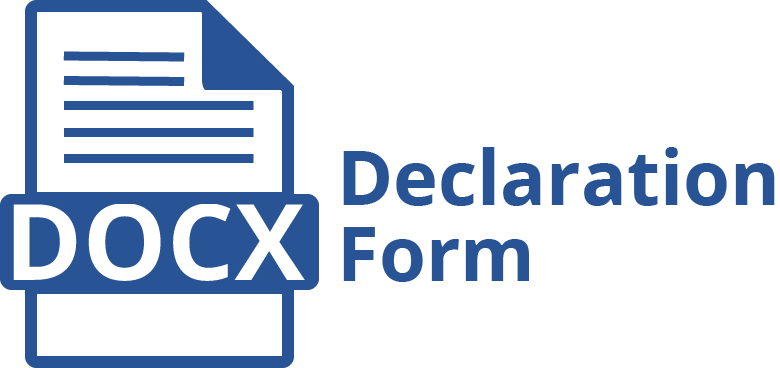Arah Tata Hubungan Kelembagaan Kesatuan Pengelolaan Hutan (KPH) di Indonesia
Ahmad Maryudi(1*)
(1) Departemen Manajemen Hutan, Fakultas Kehutanan, Universitas Gadjah Mada Jl. Agro No. 1 Bulaksumur, Sleman 55281
(*) Corresponding Author
Abstract
Pembentukan Kesatuan Pengelolaan Hutan (KPH) menjadi salah satu prioritas kebijakan Kementerian Lingkungan Hidup dan Kehutanan. Kebijakan ini diharapkan dapat menjadi solusi bagi berbagai permasalahan mendasar pengelolaan hutan di Indonesia, seperti tata kelola yang buruk, ketidakjelasan hak tenurial, dan lemahnya kapasitas dalam manajemen hutan. KPH dikonseptualisasikan sebagai penyelenggara pengelolaan hutan di tingkat tapak. Kebijakan pembangunan KPH yang diatur oleh pusat dipandang dapat menambah kompleksitas terhadap struktur pengurusan dan pengelolaan yang sudah ada selama ini. Makalah ini membahas konsep tata hubungan kelembagaan dalam kebijakan KPH.
Kata kunci: KPH, pengurusan, kelembagaan, kewenangan, resentralisasi
Direction of Institutions and Bureaucracies of Forest Management Units (FMUs) in Indonesia
Abstract
The establishment of Forest Management Units (FMUs) has been made as one of the top policy priorities by the Ministry of Environment and Forestry. The policy is expected to become a solution for problems regarding to the management of forests in Indonesia, e.g. poor forest governance, tenurial problems, limited capacity in the management of forests. FMU is conceptualized as a forest management agent/ institution at the field. The policy of establishing FMUs is often viewed to add complexities of the current forest administration and management structures. This paper discusses concepts of institutions and bureaucracies of the FMU policy.
Keywords
Full Text:
PDFReferences
- Brockhaus M, Obidzinski K, Dermawan A, Laumonier Y, & Lutrell C. 2012. An overview of forest and land allocation policies in Indonesia: Is the current framework sufficient to meet the needs of REDD+? Forest Policy and Economics 18, 30-37.
- Departemen Kehutanan 2006. Buku Pintar Bidang Planologi Kehutanan. Jakarta. http://www.dephut.go.id/index.php/news/details/2584. Diakses 3 November 2015.
- Giessen L & Krott M. 2009. Forestry Joining Integrated Programmes? A question of willingness, ability and opportunities. Allgemeine Forst- und Jagdzeitung 180 (5-6), 94-100.
- Giessen L, Krott M, & Moellmann T. 2014. Increasing representation of states by utilitarian as compared to environmental bureaucracies in international forest and forest–environmental policy negotiations. Forest Policy and Economics 38, 97-104.
- Hansen MC, Potapov PV, Moore R, Hancher, Turubanova SA, Tyukavina A, Thau D, Stehman SV, Goetz SJ, Loveland TR, Kommareddy A, Egorov A, Chini L, Justice, CO, & Townshend JRG. 2013. High-resolution global maps of 21st-century forest cover change. Science 342, 850-853.
- Hubo C & Krott M. 2010. Politiksektoren als Determinanten von Umweltkonflikten am Beispiel invasiver gebietsfremder Arten. Dalam : Umwelt-und Technikkonflikte. 219-238.
- Hubo C & Krott M. 2013. Conflict camouflaging in public administration - a case study in nature conservation policy in Lower Saxony. Forest Policy and Economics 33, 63-70
- Hurst P. 1990. Rainforest Politics: Ecological Destruction in Southeast Asia. Zed Books, London and New Jersey.
- Kartodihardjo H, Nugroho B, & Putro HR. 2011. Forest Management Unit Development – Concept, Legislation and Implementation. Directorate of Area Management and Preparation of Forest Area Utilisation, Directorate General of Forestry Planning, Ministry of Forestry.
- Kementrian Kehutanan. 2012. Statistik Kehutanan Indonesia 2011. Jakarta
- Kim Y-s, Bae, JS, Fisher LA, Latifah S, Afifi M, Lee SM, & Kim I-a. 2015. Indonesia’s Forest Management Units: Effective intermediaries in REDD + implementation? Forest Policy and Economics 62, 69-77.
- Krott M, Bader A, Schusser C, Devkota R, Maryudi A, Giessen L, & Aurenhammer H. 2014. Actor-centered power: the driving force in decentralized community based forest governance. Forest Policy and Economics 49, 34-42.
- Krott M. 1990. Öffentliche Verwaltung im Umweltschutz. Ergebnisse einer behördenorientierten Policy Analyse am Beispiel Waldschutz. W. Braumüller Verlag, Wien.
- Krott M. 2005. Forest Policy Analysis (translated by Renee von Paschen). Springer Publications.
- Light PC. 1997. The Tides of Reform:Making Government Work 1945-1995. New Haven, CT: Yale University Press.
- Marinetto M. 2003. Governing beyond the Centre: A critique of the Anglo-Governance School. Political Studies 51, 592-608
- Maryudi A. 2015. The political economy of forest land-use, the timber sector, and forest certification. Dalam : The context of Natural Forest Management and FSC Certification in Indonesia. Romero C. (Eds). Center for International Forestry Research, Bogor
- McCarthy J. 2000. The changing regime : Forest property and reformasi in Indonesia. Development and Change 31(1), 91-129
- Nagel JH. 1997. Radically reinventing government:Editor’s introduction. Journal of Policy Analysis and Management 16(3), 349-356
- Niskanen W. 1971. Bureaucracy and Representative Government. Aldine-Atherton, Chicago North DC. 1990. Institutions, Institutional Change and Economic Performance. Cambridge University Press, Cambridge
- Ostrom E. 1999. Self Governance and Forest Resources. Occasional Paper No. 20. Bogor: Center for International Forestry Research Peters BG & Pierre J. 2007. Introduction: the role of public administration in governing. Dalam: The Handbook of Public Administration. Ibid (Eds). Sage, London. 394.
- Ruhanen L, Scott N, Ritchie B, & Tkaczynski A. 2010. Governance: a review and synthesis of the literature. Tourism Review 65 (4), 4-16.
- Sahide MAK, Maryudi A, Supratman S, & Giessen L. 2016. Is Indonesia utilising its international partners? The driving forces behind Forest Management Units. Forest Policy and Economics 69,11-20
- Sahide MAK, Supratman S, Maryudi A, Kim Y-s, & Giessen L. 2016. Decentralisation policy as recentralisation strategy: forest management units and community forestry in Indonesia. International Forestry Review 18(1), 78-95
- Terry LD. 2005. The thinning of administrative institutions in the hollow state. Administration & Society 37(4), 426-444.
- World Bank. 1990. Indonesia: Sustainable Development of Forests, Land, and Water. The World Bank: Washington, DC.
Article Metrics
Refbacks
- There are currently no refbacks.
Copyright (c) 2016 Jurnal Ilmu Kehutanan
License URL: https://creativecommons.org/licenses/by-nc-sa/4.0/
© Editorial Board Jurnal Ilmu Kehutanan
Faculty of Forestry, Universitas Gadjah Mada
Building D 2nd floor
Jl. Agro No 1, Bulaksumur, Sleman 55281
Phone. +62-274-512102, +62-274-550541, +62-274-6491420
Fax. +62-274-550541 E-mail : jik@ugm.ac.id
former website : jurnal.ugm.ac.id/jikfkt/
new website : jurnal.ugm.ac.id/v3/jik/
Indexed by:
Jurnal Ilmu Kehutanan is under the license of Creative Commons Attribution-ShareAlike 4.0 International








